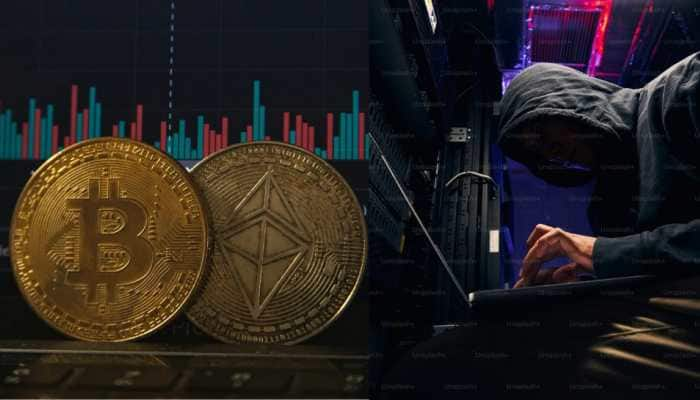World EV Day 2022: What will it take to make electric vehicles price conscious?
World EV Day: With the electric battery price reportedly falling by up to 73%, electric vehicles are expected to be as affordable as gas-powered ones in coming years.
Trending Photos
) Image for representation
Image for representation India's quest to accelerate the adoption of an electric vehicle is finally receiving support from the public and key stakeholders. Slowly but surely, people are now shifting towards electric vehicles. The major reason for this shift could be increasing fuel prices as owning an electric vehicle is cost - efficient and can save money to a great extent. Carbon emission and environmental degradation is also one of the major reasons for this shift. The coming decade is expected to be India's pinnacle of electric vehicle development. With battery amounts reportedly falling by up to 73%, electric-powered vehicles are expected to be as affordable as gas-powered ones.
According to the International Energy Agency, 70 million EVs will be on the road by 2025. The Electric vehicle market is assumed to grow at 36% CAGR until 2026. As the market becomes more competitive, it is critical to consider what it will take to compel the price-conscious Indian buyer to purchase an electric vehicle. Most buyers are concerned about three issues: purchase price parity with traditional fuel vehicles, operational and maintenance cost savings, and range or the availability of adequate charging infrastructure.
According to a report by the Observer Research Foundation (ORF), imports account for 84% of India's oil demand. Given the ever-evolving global economy and the continuously rising price of gasoline, electric-car owners can potentially save up to Rs 20,000 for every 5,000 kilometers traveled as compared to traditional fuel vehicle owners. Moreover, electrification will reduce vehicular emissions which are a significant contributor to air pollutants that cause an annual 3% GDP loss.
The electric vehicle industry in India accounts for 22% of the country's total output and is the world's sixth largest. The cost of lithium-ion batteries is approximately $250/kWh globally, which amounts to approximately Rs5.7 lakh in battery charges alone. Lithium-ion batteries account for half of the cost of an electric vehicle, making them more expensive than conventional vehicles. To combat these challenges, under the Make in India initiative, India has efficiently scaled up battery manufacturing and will soon become the battery manufacturing hub. Interestingly, foreign investors' growing interest will pave the way for overall growth.
These electric solutions are far more cost-effective and sustainable in the long run for the average Indian buyer looking for budget-friendly options. Though the upfront cost of an EV is a bit more compared to traditional fuel vehicles, an EV has lower maintenance costs than an ICE vehicle because it does not have complex combustion engines or moving parts. Road-ready EVs only require periodic inspections of electrical systems, including the battery, motor, and electronic components, lowering maintenance costs by approximately 40% compared to ICE vehicles.
Make-in-India push for EVs
The Indian government is attempting to promote domestic manufacturing by incentivizing local production and discouraging EV imports. In addition, the Ministry of Heavy Industries and Public Enterprises has announced a 50% increase in incentives for electric two-wheelers, from Rs 10,000 per kWh to Rs 15,000 per kWh. According to the new rules, the incentive cap will be limited to 40% of the total price, up from 20%. It has also directed Energy Efficiency Service Ltd (EESL) to acquire 3 lakh electric three-wheelers for various applications.
These decisions will significantly assist manufacturers in lowering the cost of electric models, allowing them to compete with, and in some cases outperform, petrol/diesel vehicles. In addition, the FAME II stimulus has aided the growth of organized 3-wheeler EVs by lowering the high sticker price of 3-wheelers powered by Li-ion batteries. The cost difference between a lead-acid battery and a more advanced Lithium-ion battery is typically between Rs 100,000 and Rs 200,000 for a 6kWh - 12kWh battery. However, the FAME II incentives for lithium-ion battery EVs effectively reduce this price difference.
The Government of India has set the goal of 30% electric vehicles on Indian roads by 2025. Work to provide the necessary charging infrastructure is already underway. The Government has approved establishing 2,636 electric vehicle charging stations across 62 cities across 24 Indian states and union territories as the second phase of the FAME India scheme. It has also directed developers to set aside 20% of parking space for EVs in all residential and office projects, which will significantly alleviate EV owners' concerns about charging infrastructure.
The electric vehicle market will undoubtedly grow in the coming years. If proper infrastructure is provided and EVs become affordable and accessible to all consumer groups, it has the potential to become one of the highest grossing industries in the Indian subcontinent in the coming future.
This article is authored by Corrit Electric. All views are personal.
Stay informed on all the latest news, real-time breaking news updates, and follow all the important headlines in india news and world News on Zee News.
Live Tv







)
)
)
)
)
)
)
)
)
)
